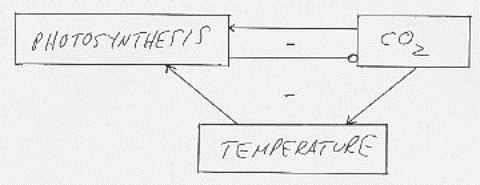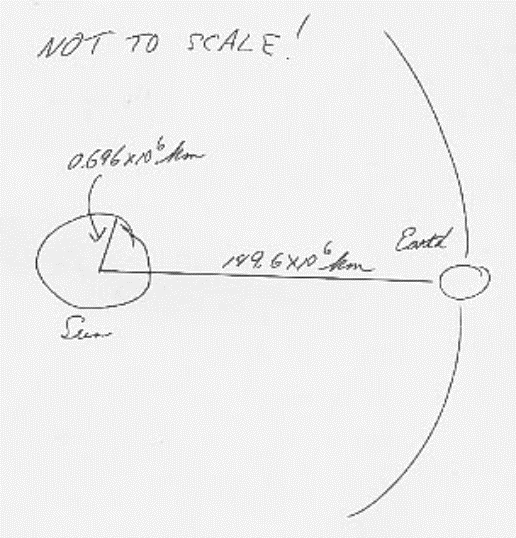
Homework 2 Answers 20 points
Review questions are worth 1 point each and critical thinking question are worth 2 points.
Chapter 1
Review Questions (1, 5, 7, 9)
1. (a) "Anthropogenic greenhouse gases" are those greenhouse gases whose concentrations are currently increasing because of anthropogenic influences.
(b) Three examples are carbon dioxide, nitrous oxide, and methane.
5. Chlorofluorocarbons can affect the environment by (a) reducing or destroying parts of the ozone layer, and (b) acting as greenhouse gases.
7. The opposing effects from burning coal over the last century were warming from the carbon dioxide released and cooling from the sulfate aerosol formed by oxidizing the sulfur dioxide released.
9. Tropical deforestation contributes to short-term global warming and reduces the biodiversity of the areas that are deforested.
Critical Thinking Questions (1 or 2)
No right or wrong answers for this problem. You will be graded on how well you justify the answer you choose. 1 pt extra credit for answering both questions.
Chapter 2
Review Questions (1, 5, 7)
1. If a perturbation that decreases component A also decreases component B, the two components are coupled positively.
5. Some equilibrium states are stable; others are unstable. It depends on whether the state is at a minimum or a maximum of energy.
7. Daisies on Daisyworld regulate its temperature by growing and reflecting more radiation (increasing the albedo) or by dying off and reflecting less radiation (decreasing the albedo).
Critical Thinking Questions (1, 2)
1. a. The system diagram for the Dysfunctional family is:

b. The feedback loop is positive because each component (parent and children) affects the other positively.
c. This makes the family unstable. That is why they are named the "Dysfunctia" family.
2. a. The relations to appear on the system diagram are (1) photosynthesis affecting CO2, (2) CO2 affecting temperature, (3) CO2 affecting photosynthesis, and (4) temperature affecting photosynthesis. These effects are negative, positive, positive, and negative, respectively. The resulting system diagram is:

b. There are two feedback loops, one between photosynthesis and CO2, and the other between photosynthesis, CO2, and temperature.
c. Both feedback loops are negative. (Thank goodness!)
d. (i) An increase in CO2 will increase the photosynthesis via the upper loop and increase it via temperature in the lower loop. The increased rate of photosynthesis will then reduce the CO2 via the negative connection in the upper loop. The net effect will be little or no change in the system. (ii) A decrease in temperature will decrease the photosynthesis, which will then increase the CO2 and the temperature again. The increased CO2 will also increase the photosynthesis to offset the effect of the first loop. Again the net effect will be little or no change in the system.
Chapter 3
Review Questions (3, 4, 8)
3. Inverse-square law
S= S0(r0/r)2
Where S is the solar flux at some distance r, and S0 represents the flux at some reference distance, r0 (such as the radius of the Sun).
4. a. Wien's Law and the Stefan-Boltzmann Law
b. Wien's Law tell us that the wavelength of maximum radiation from a blackbody depends inversely on its absolute temperature. The Stefan-Boltzmann Law states that the flux of total radiation from a blackbody varies with the fourth power of the absolute temperate.
8. Heat energy can be transferred by convection, radiation, and conduction. Convection and radiation are most important in our atmosphere.
Critical Thinking Questions (1, 3)
1. a. (Note the typo—10 mm is obviously meant to be 10 µm.) This one can be done in your head. Since Wien's law contains an inverse function of absolute temperature, doubling the temperature from 300 K to 600 K will halve the wavelength of maximum radiation, from 10 µm to 5 µm.
b. Assuming the bodies in (a) are the same size, the Stefan-Boltzmann law tell us that doubling the temperature will increase the output of radiation by a factor of 24, or 16 times.
2. a,b. Since the solar flux will vary with the inverse square of the distance from the radiating body, the flux solar flux at the earth will be (Rs/Re)2 what it is at the surface of the sun. (See diagram below.) The value of this factor is [(0.696 x 106 km)/(149.6 x 106 km)]2, or (0.696/149.6)2 = 2.166 x 10-5. The flux at the surface of the sun is F = sT4 = 6.3 x 107 W m-2. Thus the solar flux at the distance of earth (1 AU) will be (6.3 x 107 W m-2) x (2.166 x 10-5) = 1.364 x 103 W m-2, as opposed to the value of 1.37 * 10 3W m-2. Pretty good for such a simple calculation, eh?
